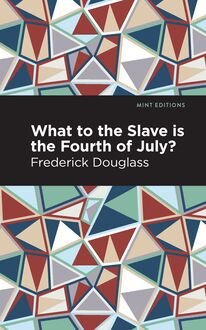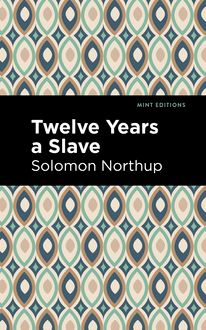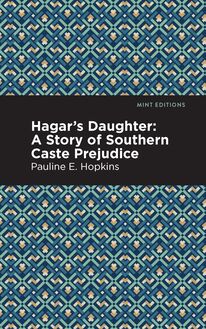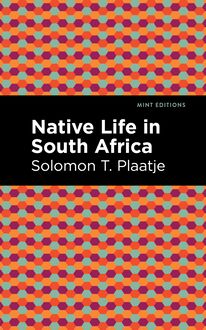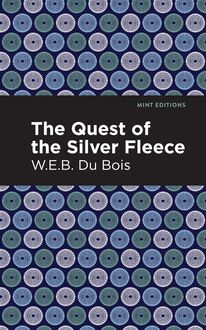-
 Univers
Univers
-
 Ebooks
Ebooks
-
 Livres audio
Livres audio
-
 Presse
Presse
-
 Podcasts
Podcasts
-
 BD
BD
-
 Documents
Documents
-
- Cours
- Révisions
- Ressources pédagogiques
- Sciences de l’éducation
- Manuels scolaires
- Langues
- Travaux de classe
- Annales de BEP
- Etudes supérieures
- Maternelle et primaire
- Fiches de lecture
- Orientation scolaire
- Méthodologie
- Corrigés de devoir
- Annales d’examens et concours
- Annales du bac
- Annales du brevet
- Rapports de stage
La lecture à portée de main
Vous pourrez modifier la taille du texte de cet ouvrage
Découvre YouScribe en t'inscrivant gratuitement
Je m'inscrisDécouvre YouScribe en t'inscrivant gratuitement
Je m'inscrisEn savoir plus
Vous pourrez modifier la taille du texte de cet ouvrage
En savoir plus

Description
A Negro Explorer at the North Pole (1912) is a memoir by Matthew Henson. Published a few years following an expedition to the planet’s northernmost point—which he claims to have reached first—A Negro Explorer at the North Pole reflects on Henson’s outsized role in ensuring the success of their mission. Although he was frequently overshadowed by Commander Robert Peary, Henson continues to be recognized as a pioneering African American who rose from poverty to become a true national hero. Seven times had Robert Peary and Matthew Henson attempted to reach the fabled North Pole. Seven times they failed. In 1908, following years of frustration, they gather a crew of Inuit guides and set sail from Greenland, hopeful that the eighth voyage will end in discovery. Throughout his life, Matthew Henson has grown accustomed to proving himself. Born the son of sharecroppers in the immediate aftermath of the Civil War, he has endured racism and economic disparity his entire life. Since 1891, Henson and Peary—who he met while working at a Washington D.C. department store—have been attempting to reach the most remote location on planet earth, an icebound region devoid of sustenance and shelter, accessible only by boat, sled, and foot. As they near the North Pole, Henson prepares to make history. With a beautifully designed cover and professionally typeset manuscript, this edition of Matthew Henson’s A Negro Explorer at the North Pole is a classic of African American literature reimagined for modern readers.
Sujets
Informations
| Publié par | Mint Editions |
| Date de parution | 01 juin 2021 |
| Nombre de lectures | 1 |
| EAN13 | 9781513294193 |
| Langue | English |
Informations légales : prix de location à la page 0,0400€. Cette information est donnée uniquement à titre indicatif conformément à la législation en vigueur.
Extrait
A Negro Explorer at the North Pole
Matthew Henson
A Negro Explorer at the North Pole was first published in 1912.
This edition published by Mint Editions 2021.
ISBN 9781513291345 | E-ISBN 9781513294193
Published by Mint Editions®
minteditionbooks .com
Publishing Director: Jennifer Newens
Design & Production: Rachel Lopez Metzger
Project Manager: Micaela Clark
Typesetting: Westchester Publishing Services
C ONTENTS F OREWORD I NTRODUCTION I. T HE E ARLY Y EARS : S CHOOLBOY , C ABIN -B OY , S EAMAN , AND L IEUTENANT P EARY ’ S B ODY -S ERVANT —F IRST T RIPS TO THE A RCTIC II. O FF FOR THE P OLE —H OW THE O THER E XPLORERS L OOKED —T HE L AMB -L IKE E SQUIMOS —A RRIVAL AT E TAH III. F INDING OF R UDOLPH F RANKE —W HITNEY L ANDED —T RADING AND C OALING —F IGHTING THE I CE -P ACKS IV. P REPARING FOR W INTER AT C APE S HERIDAN —T HE A RCTIC L IBRARY V. M AKING P EARY S LEDGES —H UNTING IN THE A RCTIC N IGHT —T HE E XCITABLE D OGS AND T HEIR H ABITS VI. T HE P EARY P LAN —A R AIN OF R OCKS —M Y F RIENDS THE E SQUIMOS VII. S LEDGING TO C APE C OLUMBIA —H OT S OLDERING IN C OLD W EATHER VIII. I N C AMP AT C OLUMBIA —L ITERARY I GLOOS —T HE M AGNIFICENT D ESOLATION OF THE A RCTIC IX. R EADY FOR THE D ASH TO THE P OLE —T HE C OMMANDER ’ S A RRIVAL X. F ORWARD ! M ARCH ! XI. F IGHTING U P THE P OLAR S EA —H ELD U P BY THE “B IG L EAD ” XII. P IONEERING THE W AY —B REAKING S LEDGES XIII. T HE S UPPORTING -P ARTIES B EGIN TO T URN B ACK XIV. B ARTLETT ’ S F ARTHEST N ORTH —H IS Q UIET G OOD - BY XV. T HE P OLE ! XVI. T HE F AST T REK B ACK TO L AND XVII. S AFE ON THE R OOSEVELT —P OOR M ARVIN XVIII. A FTER M USK -O XEN —T HE D OCTOR ’ S S CIENTIFIC E XPEDITION XIX. T HE R OOSEVELT S TARTS FOR H OME —E SQUIMO V ILLAGES —N EW D OGS AND N EW D OG F IGHTS XX. T WO N ARROW E SCAPES —A RRIVAL AT E TAH —H ARRY W HITNEY —D R . C OOK ’ S C LAIMS XXI. E TAH TO N EW Y ORK —C OMING OF M AIL AND R EPORTERS —H OME ! A PPENDIX I—N OTES ON THE E SQUIMOS A PPENDIX II—L IST OF S MITH S OUND E SQUIMOS
F OREWORD
F riends of Arctic exploration and discovery, with whom I have come in contact, and many whom I know only by letter, have been greatly interested in the fact of a colored man being an effective member of a serious Arctic expedition, and going north, not once, but numerous times during a period of over twenty years, in a way that showed that he not only could and did endure all the stress of Arctic conditions and work, but that he evidently found pleasure in the work.
The example and experience of Matthew Henson, who has been a member of each and of all my Arctic expeditions, since ’91 (my trip in 1886 was taken before I knew Henson) is only another one of the multiplying illustrations of the fact that race, or color, or bringing-up, or environment, count nothing against a determined heart, if it is backed and aided by intelligence.
Henson proved his fitness by long and thorough apprenticeship, and his participation in the final victory which planted the Stars and Stripes at the North Pole, and won for this country the international prize of nearly four centuries, is a distinct credit and feather in the cap of his race.
As I wired Charles W. Anderson, collector of internal revenue, and chairman of the dinner which was given to Henson in New York, in October, 1909, on the occasion of the presentation to him of a gold watch and chain by his admirers:
“I congratulate you and your race upon Matthew Henson. He has driven home to the world your great adaptability and the fiber of which you are made. He has added to the moral stature of every intelligent man among you. His is the hard-earned reward of tried loyalty, persistence, and endurance. He should be an everlasting example to your young men that these qualities will win whatever object they are directed at. He deserves every attention you can show him. I regret that it is impossible for me to be present at your dinner. My compliments to your assembled guests.”
It would be superfluous to enlarge on Henson in this introduction. His work in the north has already spoken for itself and for him. His book will speak for itself and him.
Yet two of the interesting points which present themselves in connection with his work may be noted.
Henson, son of the tropics, has proven through years, his ability to stand tropical, temperate, and the fiercest stress of frigid, climate and exposure, while on the other hand, it is well known that the inhabitants of the highest north, tough and hardy as they are to the rigors of their own climate, succumb very quickly to the vagaries of even a temperate climate. The question presents itself at once: “Is it a difference in physical fiber, or in brain and will power, or is the difference in the climatic conditions themselves?”
Again it is an interesting fact that in the final conquest of the “prize of the centuries,” not alone individuals, but races were represented. On that bitter brilliant day in April, 1909, when the Stars and Stripes floated at the North Pole, Caucasian, Ethiopian, and Mongolian stood side by side at the apex of the earth, in the harmonious companionship resulting from hard work, exposure, danger, and a common object.
R. E. P EARY
Washington, Dec., 1911
I NTRODUCTION
O ne of the first questions which Commander Peary was asked when he returned home from his long, patient, and finally successful struggle to reach the Pole was how it came about that, beside the four Esquimos, Matt Henson, a Negro, was the only man to whom was accorded the honor of accompanying him on the final dash to the goal.
The question was suggested no doubt by the thought that it was but natural that the positions of greatest responsibility and honor on such an expedition would as a matter of course fall to the white men of the party rather than to a Negro. To this question, however, Commander Peary replied, in substance:
“Matthew A. Henson, my Negro assistant, has been with me in one capacity or another since my second trip to Nicaragua in 1887. I have taken him on each and all of my expeditions, except the first, and also without exception on each of my farthest sledge trips. This position I have given him primarily because of his adaptability and fitness for the work and secondly on account of his loyalty. He is a better dog driver and can handle a sledge better than any man living, except some of the best Esquimo hunters themselves.”
In short, Matthew Henson, next to Commander Peary, held and still holds the place of honor in the history of the expedition that finally located the position of the Pole, because he was the best man for the place. During twenty-three years of faithful service he had made himself indispensable. From the position of a servant he rose to that of companion and assistant in one of the most dangerous and difficult tasks that was ever undertaken by men. In extremity, when both the danger and the difficulty were greatest, the Commander wanted by his side the man upon whose skill and loyalty he could put the most absolute dependence and when that man turned out to be black instead of white, the Commander was not only willing to accept the service but was at the same time generous enough to acknowledge it.
There never seems to have been any doubt in Commander Peary’s mind about Henson’s part and place in the expedition.
Matt Henson, who was born in Charles County, Maryland, August 8, 1866, began life as a cabin-boy on an ocean steamship, and before he met Commander Peary had already made a voyage to China. He was eighteen years old when he made the acquaintance of Commander Peary which gave him his chance. During the twenty-three years in which he was the companion of the explorer he not only had time and opportunity to perfect himself in his knowledge of the books, but he acquired a good practical knowledge of everything that was a necessary part of the daily life in the ice-bound wilderness of polar exploration. He was at times a blacksmith, a carpenter, and a cook. He was thoroughly acquainted with the life, customs, and language of the Esquimos. He himself built the sledges with which the journey to the Pole was successfully completed. He could not merely drive a dog-team or skin a musk-ox with the skill of a native, but he was something of a navigator as well. In this way Mr. Henson made himself not only the most trusted but the most useful member of the expedition.
I am reminded in this connection that Matthew Henson is not the first colored man who by his fidelity and devotion has made himself the trusty companion of the men who have explored and opened up the western continent. Even in the days when the Negro had little or no opportunity to show his ability as a leader, he proved himself at least a splendid follower, and there are few great adventures in which the American white man has engaged where he has not been accompanied by a colored man.
Nearly all the early Spanish explorers were accompanied by Negroes. It is said that the first ship built in America was constructed by the slaves of Vasquez de Ayllon, who attempted to establish a Spanish settlement where Jamestown, Virginia, was later founded. Balboa had 30 Negroes with him, and they assisted him in constructing the first ship on the Pacific coast. Three hundred slaves were brought to this country by Cortez, the conqueror of Mexico, and it is said that the town of Santiago del Principe was founded by Negro slaves who later rebell
-
 Univers
Univers
-
 Ebooks
Ebooks
-
 Livres audio
Livres audio
-
 Presse
Presse
-
 Podcasts
Podcasts
-
 BD
BD
-
 Documents
Documents
-
Jeunesse
-
Littérature
-
Ressources professionnelles
-
Santé et bien-être
-
Savoirs
-
Education
-
Loisirs et hobbies
-
Art, musique et cinéma
-
Actualité et débat de société
-
Jeunesse
-
Littérature
-
Ressources professionnelles
-
Santé et bien-être
-
Savoirs
-
Education
-
Loisirs et hobbies
-
Art, musique et cinéma
-
Actualité et débat de société
-
Actualités
-
Lifestyle
-
Presse jeunesse
-
Presse professionnelle
-
Pratique
-
Presse sportive
-
Presse internationale
-
Culture & Médias
-
Action et Aventures
-
Science-fiction et Fantasy
-
Société
-
Jeunesse
-
Littérature
-
Ressources professionnelles
-
Santé et bien-être
-
Savoirs
-
Education
-
Loisirs et hobbies
-
Art, musique et cinéma
-
Actualité et débat de société
- Cours
- Révisions
- Ressources pédagogiques
- Sciences de l’éducation
- Manuels scolaires
- Langues
- Travaux de classe
- Annales de BEP
- Etudes supérieures
- Maternelle et primaire
- Fiches de lecture
- Orientation scolaire
- Méthodologie
- Corrigés de devoir
- Annales d’examens et concours
- Annales du bac
- Annales du brevet
- Rapports de stage

